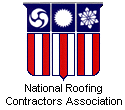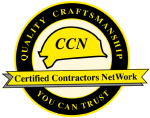 |
 |
 Home Home Roofing Services Roofing Services Estimates Estimates Testimonials Testimonials Six Questions Six Questions Anatomy of a Roof Anatomy of a Roof Career Opportunities Career Opportunities Mission Statement Mission Statement Roofing Facts & FAQ Roofing Facts & FAQ   Lake Orion Roofing Inc. (248) 393-0055 (248) 393-2913 (fax) Sales and Service: sales@lakeorionroofing.com General Information: info@lakeorionroofing.com Website & Advertising: web@lakeorionroofing.com |
 Minimizing the Cost of Roof Repairs Minimizing the Cost of Roof RepairsThe best way to minimize roof repair bills is to PREVENT damage before it occurs. This means periodically inspecting the roof. Inspections should be made at least twice a year -- in early spring to assess any damage from winter weather and in early fall to detect any damage or deterioration which has occurred during the summer. Additional inspections should be made in the aftermath of unusual weather or events, such as high winds, hail, snow and ice or severe temperature conditions. Steep roofs can be inspected from the ground or on a ladder. Look for danger signs like missing, curled or cracked shingles, debris on the roof, clogged gutters and drains and severe weathering. If you are unable to safely make an inspection yourself, have a professional roofing contractor do it for you. The cost is reasonable, and it could prevent later repairs. Inside, check for evidence of possible leaks such as damp areas and stains on ceilings, peeling wallpaper and discolored wallboard. Because they are generally more accessible, building and home owners can conduct more detailed inspections of low slope ("flat") roofs. The following items should be on your preventive maintenance check list:
|